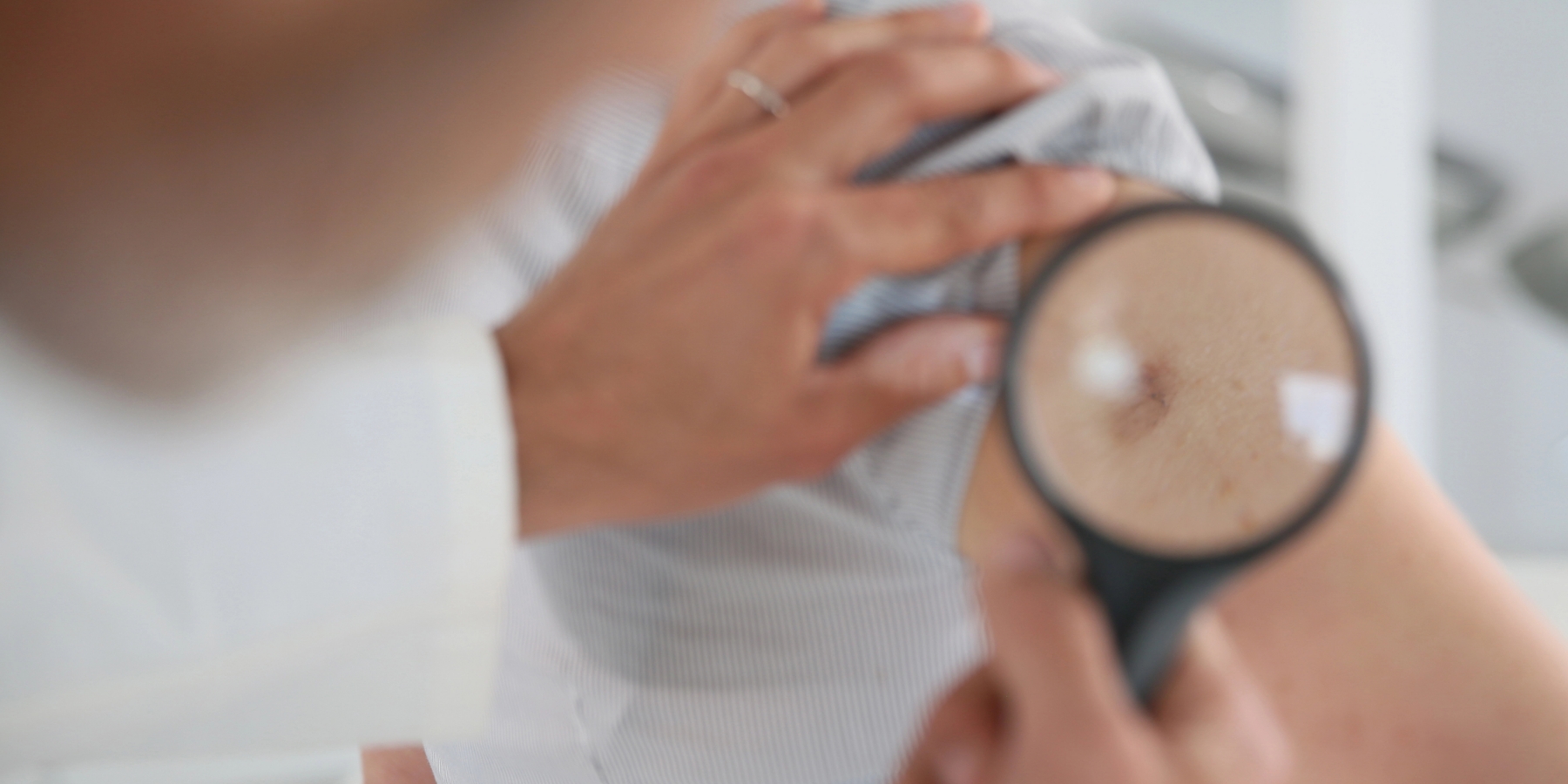
Cancer is one of the scariest words in the English language, and any cancer diagnosis has the potential to frighten and overwhelm a person. However, while skin cancer remains the most prevalent form of cancer diagnosed today, affecting people of all skin types and shades, its also one of the easiest forms to treat, particularly when detected early. Melanoma is one of the most dangerous types of skin cancer that arises from melanocytes, which are the cells that create pigment, or color, in the skin.
Our board-certified dermatologists at Houston Skin are experts in diagnosing and treating skin cancers, including basal cell carcinoma and squamous cell carcinoma. We also have an in-house, fully accredited Mohs surgery lab, which ensures our patients have the best chance for a cure.
If you currently have an atypical growth or have received a melanoma diagnosis, we urge you to contact us at Houston Skin for an evaluation. Early skin cancer screening allows us to detect melanoma as early as possible and gives us the best chance for effective treatment. If cancer is found, our dermatologists will create a comprehensive and compassionate treatment plan to get you the best long-term outcomes.
What Is Melanoma?
Melanoma is also called malignant melanoma. This dangerous form of skin cancer often grows from amole or resembles a mole but can quickly evolve or change. Most melanomas are black or brown but can also be flesh-colored, pink, blue, or white. In addition, some specific risk factors increase a person’s chance of developing melanoma. These risk factors include:
- Overexposure to the sun
- Blistering sunburns, most often in childhood
- Fair-skinned complexion
- Numerous moles on the skin
- Family history of melanoma
Learn The Symptoms of Melanoma
Early detection and treatment are the keys to successfully treating melanoma; otherwise, it can spread to other body parts. Once melanoma has spread, it becomes more difficult to treat successfully. There are some specific symptoms of melanoma that, if experienced, should be evaluated by one of our skin cancer experts at Houston Skin. Most commonly, melanomas develop on the back and legs but can be found anywhere on the body.
The following are the ABCDEs for identifying potential skin cancer symptoms:
- Asymmetry: When one side of the mole isn’t quite equal to the other half, either in terms of shape, color or outline.
- Borders: If the borders are uneven, wavy, or irregular, this can be a sign of melanoma.
- Color: Moles can be black, brown, tan, even red, pink or gray , but if a mole is several colors or changes color, this can be a sign of skin cancer.
- Diameter: Melanomas are typically larger than the tip of a pencil eraser.
- Changes: Any change in size, shape, color, or any new symptoms, such as bleeding, itching, or crusting, may be a sign of melanoma.
Learn more about malignant melanoma at WebMD.com.
Melanoma Treatment
Melanoma must be diagnosed with a biopsy. Our practitioners at Houston Skin will carefully examine your mole or suspicious spot. A biopsy may be performed to send a specimen to the lab for further evaluation. If you receive a positive biopsy report, we will evaluate your level of melanoma, which indicates how deeply and/or widespread the cancer has grown. Based on these findings, we will then create an individualized treatment plan to eliminate the melanoma successfully.
Surgical Excision
This is usually the first line of treatment for melanoma. It involves surgical removal of the cancerous tissue and a margin of surrounding skin.
The earlier melanoma is diagnosed, the better the outcome for all patients. In addition to performing personal skin checks, it’s essential to have a yearly skin check with one of our practitioners at Houston Skin so that skin cancer or abnormality can be caught in its earliest stage. If a person falls into a higher-risk category, a full skin examination may be recommended 2-4 times per year.
Melanoma Aftercare: Healing with Care
Proper wound care and diligent protection are essential after melanoma treatment for a smooth recovery and minimal scarring. At Houston Skin, we’ll provide you with detailed, personalized instructions to ensure your healing journey is as comfortable and successful as possible.
Here are some key steps to remember:
- Gentle Cleansing: Avoid showering for the first 48 hours, but gently cleanse your treatment site with fragrance-free, sensitive-skin soaps to keep it clean and promote healing.
- Rest and Recuperation: Take it easy for a couple of weeks. Skip strenuous workouts and activities that could strain the area, allowing your body to focus its energy on healing.
- Sun Protection: Shielding your skin from the sun’s rays is vital. Minimize outdoor time, and wear protective clothing, a wide-brimmed hat, and sunglasses when you venture out. Reapply sunscreen with an SPF of 30 or more every two hours, regardless of weather conditions.
Meet The Team
Our Houston team of Board-Certified Dermatologists and licensed skin care providers brings a wealth of experience and a passion for healthy skin. With extensive clinical experience and the highest levels of training, our doctors are committed to delivering exceptional care and achieving optimal results for every patient. We prioritize your comfort and safety, promoting a positive and reassuring experience throughout your journey to vibrant skin. We’re honored to be your trusted provider of quality medical dermatology care and your partners in achieving and maintaining your skin’s health.
Contact Houston Skin for Melanoma Treatment
Schedule a melanoma consultation at one of our convenient Houston Skin locations today. Our board-certified dermatologists will provide a personalized assessment and recommend the ideal treatments to help you heal and remove skin cancer. Call now or schedule a consultation online to take the first step towards a more confident, radiant you.


